In the comments section of my last post on the New York Times Graphic Book Bestseller List, a commenter named Tommy Raiko comes to different conclusions about the list than I did. It’s a thought-provoking response:
“If we assume that the NYT is indeed getting actual sell-thru data from comics stores to form the bestseller list, we still don’t necessarily know which stores form those reports. Maybe the stores that reported their sales had exceptional success with this promotion, actually using it to sell dramatically more copies of the book to customers. That’s gotta be possible, right?” – Tommy Raiko
The reason I had initially discounted this possibility–the thought did occur to me–is that prior to about two years ago, there was almost no method of reporting sales data from individual comic book stores. It’s really only been in the last 5 years that direct market comic book stores have moved, in a major way, towards digital inventory tracking and control. I know that Hibbs has been chronicling that change at his various writing outlets. When I think to myself “What possible data could they be using?” it never even occurred to me that they might have access to DM sell-through data, because historically, they didn’t. No one did. Many comic book stores didn’t (don’t?) even have paper tracking methods (generally referred to as “cycle counting”), let alone weekly digital inventory counts that they could pass along to The Times.
Let alone a centralized hub for that sell-through data to be collected and disseminated, let alone Diamond having that data…
But in responding to Tommy’s message, I allowed that the possibility did exist… however small.
“That’s an excellent rebuttal, and you could be right. In fact, a few hundred comic stores are now using Diamond’s proprietary sales tracking software, and perhaps its the sales of those hundred stores that are being submitted as comic book store data. Sure.
“But the appearance of specific books on the top 25 (I don’t want to name them because singling out books in a negative way, in the context of this discussion, isn’t really appropriate), not to mention Occam’s Razor, lead me to believe my conclusions are closer to the truth…” – Me!
Over the past few days, I’ve been thinking about it. Diamond has been slowly rolling out a proprietary sales tracking software (ComicSuite) last year, that works with Microsoft RMS (Retail Management System). The sales data of stores with this software is now, I believe, automatically being reported to Diamond. I’m not 100% convinced that it’s really “a few hundred stores” using this software, and I don’t believe Diamond has announced how many people have bought in. But yeah, Diamond is collected accurate sales data from a limited group, so it is possible on some level that this could be based on existing sales.
Why this still doesn’t matter: If all of this is true, an alternate theory to the one in my last post, it still means the reporting method at the NYT is broken. Why? Here: The sample size of sales is still small. Probably very small. It’s also limited to stores that can afford to drop a few grand on this software, plus pay a yearly fee for life. It’s also comprised of early adopters, folks who are generally a little more hands-on with their business, and that usually translates to ordering habits that go outside of the Marvel/DC areas. That weighs the number. Like any first-year statistics student will tell you, voluntary surveys are already biased towards people that are willing to take a survey.
So yeah, even if they’re using sell-through data from Diamond’s incredibly small, biased survey group, and then extrapolating it out to all 3000-ish Diamond accounts? It still corrupts the overall list, Bookscan is measuring a (debatable) 70% of the bookstore market. At best the Diamond numbers are 10% of the comic store market, and clearly being given a lot of weight. It’s why we end up with Dark Tower at #1. It don’t make sense.
—
Edit: Brian Hibbs says some interesting things in the comments to this post:
“For what it is worth, ComicsPRO is working with the NYT to get more stores involved in reporting their individual numbers to the list.
“For what it is worth, I believe that more DM stores are using MOBY than using ComicsSuite from Diamond (probably by a factor of two or more)
“And IF ComicsSuite is reporting sell-through to Diamond (and I doubt it is), Diamond has not disclosed that, and, so, that would probably be illegal.” – Brian Hibbs, Retailer, Comix Experience
So is that confirmation that individual stores are reporting sales to the NYT? Fascinating. I still feel like it could only be an incredibly small sample-selection as it stands, but I’m heartened to hear that someone, somewhere is selling the books that make it onto the list. I’m also glad to see my theory about Diamond reporting sell-through data shot down, it was a little ‘big-brother’, even for me.
Now back to the end of the post:
—
And here’s another thought I had. I know it fits into my last theory/post, and I feel like it does here, but I’m not entirely sure how. I know it’s true though, so here goes: The NYT Graphic Novels Besteller List clearly favours comics and books that are exclusively orderable through Diamond; books for which Diamond has a direct-market exclusive, AND books which are distributed to bookstore by Diamond. But why? Because as Brian Hibbs pointed out in the response to my PREVIEWS LIVEBLOG a few weeks ago, many, many of the books in the Previews catalogue are available cheaper through other sources, other distributors. Smart retailers are figuring this out, and moving their orders elsewhere. Except in cases where they can’t, where Diamond is the Only Source. So if the Bestseller charts are based on Diamond sell-in, and not sell-through, and extrapolated out and weighed equally with reporting bookstores, then books only available through Diamond are going to have a huge advantage; those sales are going to be reported wheras comic store sales of books ordered from Ingram or Baker & Taylor or any alternate distribution source? Those don’t get reported through bookscan, and they wouldn’t get reported through Diamond under my scenario… Unless the NYT lists are taking Ingram and B&T sales into account, and I don’t believe they traditionally have (because that would measure sell-in, and not sell-through, and we’re back to where we started).
Anyway, that’s where I’m at with this. I think the New York Times Graphic Novel Bestseller list? It’s nice as a promotional tool, but I’m utterly unconvinced that the list means much at all. Much like every other half-assed piece of data we have, it’s at best a tool for measuring popularity over the long term. Watchmen’s on the list for every week? It’s probably a best-seller! A children’s graphic novel from a Diamond-exclusive publisher debuts on the list and is never seen again? Probably doesn’t mean a whole lot, sales-wise.
– Christopher


Via cellphone, so can’t compare the lists, going by memory…
1) DC, Viz, Tokyopop aren’t distributed by Diamond Book Distributing. While Diamond is distributing these titles to comicbook stores, wouldn’t they chart lower if available from other distributors?
2) Diamond Book distributes Marvel, Image, Dark Horse, IDW, and many smaller presses. Could it be argued that a distributor specializing in graphic novels, distributing many of the larger publishers, would have many titles on a list specializing in graphic novels?
I suspect you are right, that sell-in data is being reported. Could someone run a weekly comparison between BookScan sales and NY Times listings? How much correlation is there? Could someone ask Diamond what sort of data they are supplying to the New York Times?
For what it is worth, ComicsPRO is working with the NYT to get more stores involved in reporting their individual numbers to the list.
For what it is worth, I believe that more DM stores are using MOBY than using ComicsSuite from Diamond (probably by a factor of two or more)
And IF ComicsSuite is reporting sell-through to Diamond (and I doubt it is), Diamond has not disclosed that, and, so, that would probably be illegal.
-B
I know I’m late on this, but I’m wondering if they’re looking at it somewhat from a publisher POV.
Sales through the DM are non-returnable sales. Therefor it doesn’t matter what the sell through is, the publishers got their money. So those sales count. Plus with the top books in the DM, you can maybe assume that most stores didn’t gamble a whole lot and for the majority of those shipped it was a quick sell through?
Then they add on Bookscans #s because those books are sold and not getting returned. What amount does get returned will be determined months from now and for the purpose of the latest best sellers list are taken out of the equation.
Maybe they sprinkle some voodoo adjusting of the numbers to account for “30%” that don’t report sales through Bookscan.
For what it’s worth, the fine print at the bottom of the New York Times Graphic Book Bestseller list reads:
“Rankings reflect sales of graphic novels…at many thousands of venues where a wide range of books are sold nationwide. These include hundreds of independent book retailers (statistically weighted to represent all such outlets); national, regional and local chains; online and multimedia entertainment retailers; university, gift, supermarket, discount department stores and newsstands. In addition, these rankings also include unit sales reported by retailers nationwide that specialize in graphic novels and comic books.”
Though the language can be parsed several ways, that last part–“unit sales reported by retailers nationwide that specialize in graphic novels and comic books”–certainly implies that they are getting data on retailers’ sales, not relying on the wholesaler’s sell-in figures.
Whether they’re getting that data from arrangements with idividual comics retialers, or through an arrangment with some other entity that aggregates individual comics retailers’ sell-through data, we, of course can’t tell.
Also, at a nitpick, I’m not sure that the New York Times uses Bookscan numbers (at least not exclusively) to generate their bestseller list. The NYT Bestseller list long precedes Bookscan after all, so they must have had some mechanism for getting book sales data long before Bookscan came on the scene. They may still be using much of the same non-Bookscan intrastructure they’d built previously. Or maybe not, but it’s at least a possibility.